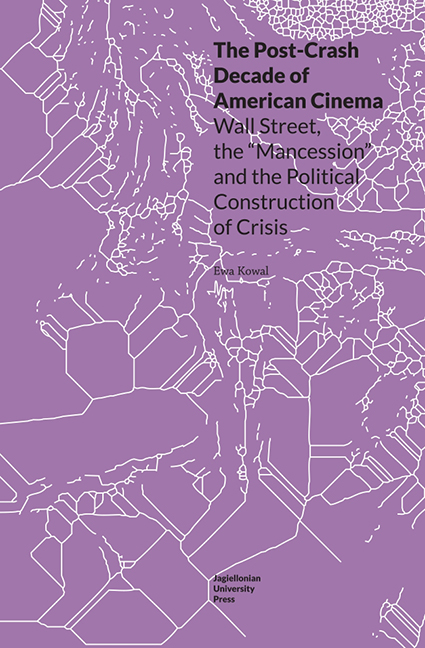 The Post-Crash Decade of American Cinema
The Post-Crash Decade of American Cinema Conclusion
Published online by Cambridge University Press: 05 May 2023
Summary
In 2006, just before the 2007/8 global financial meltdown began, David A. Zimmerman published his book Panic! Markets, Crises, & Crowds in American Fiction. The book concentrates on what the author calls “panic fiction,” i.e. popular literature written between 1898 and 1913 in response to recurrent minor panics and two financial crises which took place in the United States in 1893 and 1907 (Zimmerman 2006: 8). As the author points out (providing so far the broadest historical context for the subject matter of the present book), the period between 1890 and 1910 saw a “massive corporate makeover that reshaped the United States economy and society, a makeover that entrenched large corporations, the stock market, and financial titans at the center of the economy” not only in the US, but in the world (ibid., 15–16). For “contemporary observers” this shift was “an economic typhoon”: “It is hard to overstate the sense of disorientation Americans felt during the corporate restructuring,” while mourning “the loss of ‘the old and simple life of America’” (ibid., 21). What both resulted from this new situation and further exacerbated it was the increased recurrence of “financial panics,” which “along with natural disasters, military actions, and labor strikes […] were the most sensational mass events experienced and discussed by all classes” because they “affected virtually every area of national and private experience” (ibid., 1).
In this context, at the turn of the 20th century, the written word played a special role: “[W]aves of pamphlets […], magazine and journal articles, and fictional works were rushed into print to meet Americans’ desperation to understand” the new times (ibid.). There was a particular demand for finance fiction – “around three hundred novels focusing on financial and economic questions were published between 1870 and 1900” (ibid., 9), and “[a]t least two dozen economic novels appeared in the months after the panic of 1893, a fraction of the hundred or so economic novels […] published during the ensuing depression” (ibid.; my emphasis – E.K.).
Panic! Markets, Crises, & Crowds in American Fiction focuses on popular novels directly addressing financial panics and crises in the US in that period, some of which became “national bestsellers” (ibid., 10).
- Type
- Chapter
- Information
- The Post-Crash Decade of American CinemaWall Street, the 'Mancession' and the Political Construction of Crisis, pp. 197 - 218Publisher: Jagiellonian University PressPrint publication year: 2021
